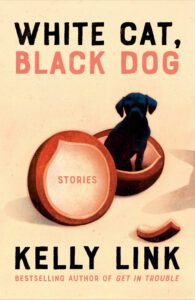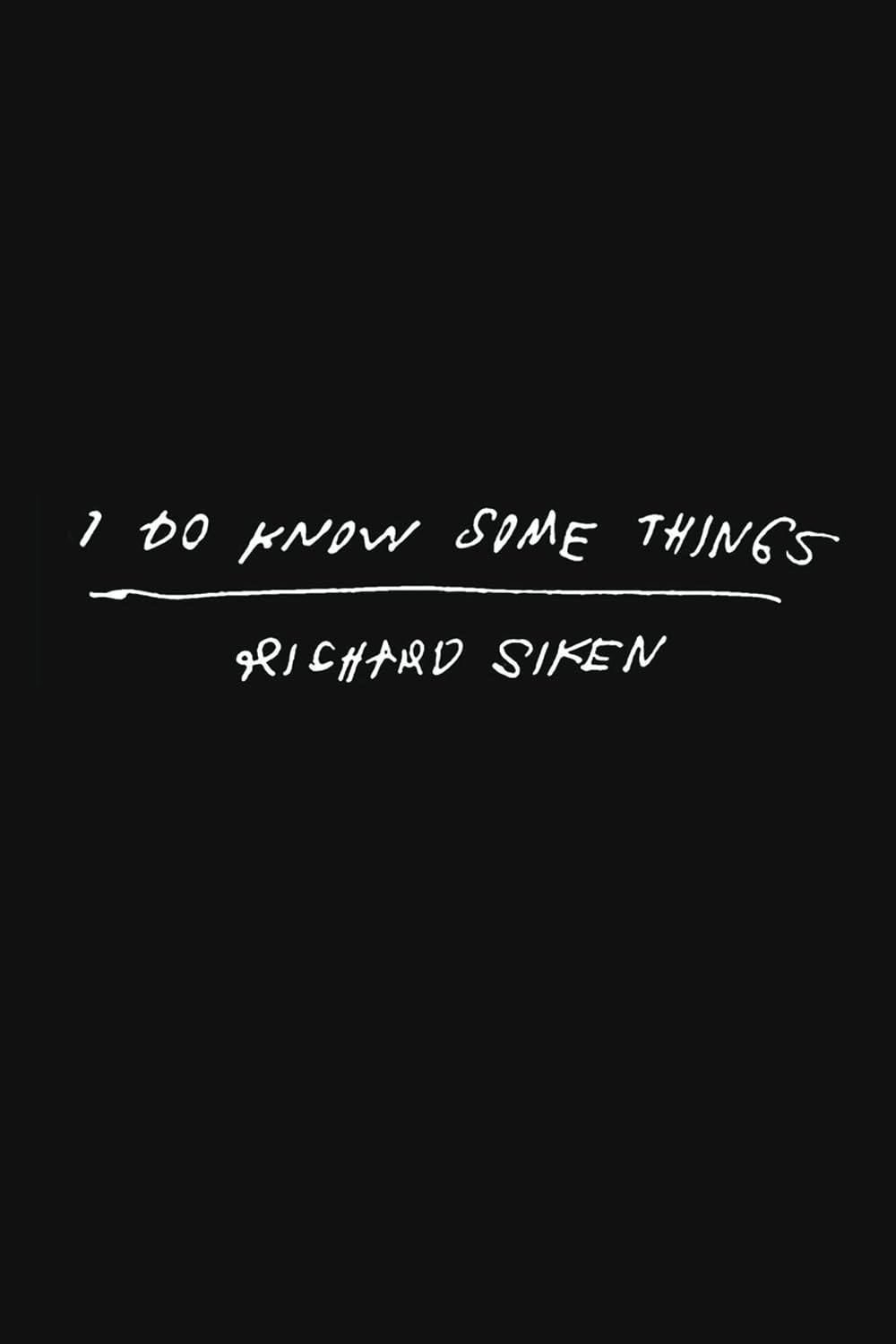Kelly Link once won a writing contest for a free trip around the world, answering the question: “Why do you want to go around the world?” Her answer: “Because you can’t go through it.”
On paper, Link is a literary force, well known as a writer of short stories and her 2016 book, Get In Trouble was a finalist for the Pulitzer Prize. She’s the co-founder of Small Beer Press, bookstore owner, and the recipient of numerous accolades, including the Shirley Jackson, World Fantasy, and O’Henry awards, among others, and was the recipient of the coveted MacArthur Fellowship. Her voice defies genre, incorporating elements of fantasy, horror, science fiction, and literary fiction. Her work wonders and wanders.
I’ve been a fan of Link’s writing for a decade and a half. My first interaction with her stories was “The Constable of Abal” and “The Faery Handbag”, which appear in the anthologies The Coyote Road and The Faery Reel, edited by renowned genre editors Ellen Datlow and Terri Windling, which I devoured as a teenager. I remember, after reading them, buying a book in Raven Used Books, a dusty (and potentially magical) basement bookstore in Northampton, Massachusetts because I liked the cover. That book was Pretty Monsters, Link’s collection of young adult stories. If I remember correctly, I didn’t even read the author name before purchasing it. To my surprise, both stories were inside, as if they were waiting for me to find them. I’ve followed her career ever since.
Her new collection, White Cat, Black Dog, leans into her signature style even further, applying her voice to the creation of seven stories based in fairy tales. Each story is accompanied by the title of a traditional fairy tale to which it’s connected, sourced from the folklorists and writers The Brothers Grimm, Francis Child, Madame d’Aulnoy, and Asbjørnsen and Moe. Inside are talking snakes, a girl commanding a horde of mysterious robots, a camper van full of dogs, and Death himself. And that’s barely scratching the surface.
I had the pleasure of speaking with Kelly Link via email about the project of her new collection, her writing’s connection to fairy tales, the intersection of being a writer, bookstore owner, and independent publisher, and the decision to write her first novel, The Book of Love, among other topics.
***
The Rumpus: What drew you to writing a collection based on fairy tales? Were you intending to write a themed collection or was this an evolving project, given that stories were published over a seven-year time span?
Kelly Link: I didn’t intend to write a collection at all, given that I was under contract for a novel, and already fairly along in that process. But over the seven plus years that I was working on the novel, I agreed to write a handful of short stories for various editors, beginning with Stephanie Perkins. That story was “The Lady and the Fox,” loosely based on the ballad “Tam Lin,” which is not technically a fairy tale, but close enough. When I was asked to write a fairy tale for a catalog to accompany an exhibition of fairy-tale art, curated by Emily Stamey, I realized that a previous story, “The Game of Smash and Recovery,” had echoes of “Hansel and Gretel.” I decided that I would set myself a rule—that any new story must engage in some way with a fairy tale. I find it helpful to make writing into a kind of game in one way or another, and then to take the game as seriously as possible.
Rumpus: Upon reading the source fairy tales listed for the different stories in the White Cat, Black Dog, there seems to be a wide variation in how much the stories follow the originals. “The White Cat’s Divorce” seems to be cut from the same cloth as d’Aulnoy’s “The White Cat”, while “The White Road” varies significantly from The Grimms’ “The Musicians of Bremen.” How much of the connection between each story and its original fairy tale is adaptation and how much is inspiration?
Link: I wanted the overall feeling of the book to be unpredictable in pleasurable ways, which ruled out making it only retellings. I wanted variation, and freedom to approach narrative in the way that best suited the people and the situations that I aimed to write about. I also wanted readers to approach the stories in their own way and engage with the original fairytales as much as they chose to. I like that putting the titles of fairy tales in parentheses renders them invisible to some readers. They are the bones. They help the stories move, but they’re not necessarily the thing I want the reader to think of first.
Rumpus: “Prince Hat Underground” and “Skinder’s Veil” are the two stories in this collection that were published during the pandemic. How were these stories different in theme/approach/process/etc… from the other five?
Link: I wrote those two stories in very different headspaces—“Skinder’s Veil” was written during the part of the pandemic when I was most isolated from community, and when I was not sure what finishing a novel would require, even though I was ninety percent of the way through a draft. So, I very much identify with Andy, the main character, on some level. But even in a short story, a genre where I usually feel very much at home, I had lost my ability to see if things were working in interesting ways. It’s been confusing but delightful that readers have enjoyed it. That story, in particular, is one where I threw in as many fairy tales as possible. It’s more of a grab-bag of fairy tales and techniques than the other stories.
“Prince Hat Underground” is probably the closest to a strict retelling of all the stories in the collection. My editor Caitlin McKenna suggested that I think about “East of the Sun, West of the Moon,” for a last story, and I found a variant, “Prince Hat Underground”, which suggested almost the whole of the story to me. I felt much more confident in my approach there, and it was a kind of reward, as well, to tackle something like a retelling in a way that still felt like it allowed for the kind of strangeness that I’m interested in.
Rumpus: Some of the stories in the collection, particularly “The White Cat’s Divorce,” appear to criticize/satirize the behavior of a wealthy and powerful upper class. How important is this theme in your work?
Link: That’s a great question, and I don’t really know the answer. What I do know is that fairy tales are a populist form—they grant power and wealth to deserving characters, sometimes, and they punish characters who are greedy, or who behave poorly. The happy ending of a fairy tale just as often reasserts the typical order, with a new king instead of looking toward a world in which there are no kings. Is the fairytale regressive or is it revolutionary or is it both? But wealth and power are just as central to the fairy tale as the commoner/folk hero/folk heroine.
There is something fantastical about how much money and how many resources real people in the real world have managed to sequester for themselves. Fantastical and grotesque. I don’t know if I’ve managed a real critique of this in these stories, but 2023 feels much closer to the world in which fairy tales were first told than I’d hoped it would be.
Rumpus: Based on the order of the stories in the collection, was there a particular journey you wanted to take your readers on? In particular, I noticed the first and last stories both contain a small dog and Death personified, and would love to hear about this reflecting motif.
Link: The dog in “The White Cat’s Divorce” is much, much smaller. And yes, Death is present in both, though more present/absent in “Skinder’s Veil.” It did feel like a neat (if obvious trick) to shape the collection so that it echoed the title—a white cat at the start, and a black dog at the end. In terms of journey, I think of story order as a kind of tonal puzzle to be arranged—which stories are too much alike tonally, or thematically, and need another story to come and sit between them? What story will be the invitation? Which story will be the send-off? What is the arrangement of moods and pacing that feels most pleasing?
Rumpus: You dedicated White Cat, Black Dog to Ellen Datlow and Terri Windling, two legendary genre editors who have repeatedly published your work. What has their influence done for your writing, career, and this book?
Link: Ellen and Terri are important to me in so many ways. Before they were champions of my short stories, they were editors whose published anthologies, novels, and magazines that were exactly what I wanted and needed as a reader and writer. They fostered a community that felt welcoming, inspirational, fearless, and quite wide in terms of interests, approach, and genre. This book in particular is in debt to their anthologies of retold fairy tales, but I was already indebted to them as a writer.
I also learned a great deal about how to edit from Ellen and Terri. Early on, I read slush for Ellen, and I listened to them on panels, or in more informal discussions about their enthusiasm and interest in work from new writers, and what it meant to be open as a reader/editor, but also to trust my instincts about whether or not I would be the right editor for a particular story.
Rumpus: You run your own publishing house, Small Beer Press, which published your first two books. How did you decide to start your own publishing company? After this, your third book was picked up by Penguin Random House. How did that come about?
Link: My career as a publisher is very bound up in my relationship with my husband and co-publisher Gavin Grant. He had started a zine, Lady Churchill’s Rosebud Wristlet, a year before we began dating, and I began to work on that with him. We both loved the editorial process, but also the experience of publishing in a limited and informal capacity. After a few years of talking to other friends, who had experience running small presses or working at larger houses, we decided that we would give that a go – I had a collection’s worth of stories which no other publisher was interested in, and we had a small list of other writers whose work we loved. We approached one of them, Ray Vukcevich, who—somewhat surprisingly—was willing to be published by a small press.
There’s a long tradition of small press publishing in genre fiction, and that was a real help to us. The fairly new possibilities that desktop publishing was opening up were another help.
And I sold my third collection, which was young adult, to an editor at Penguin, I think in part because my previous two collections had not done badly, and that editor felt it was possible to reach a wider audience and offered an advance to back that up.
Rumpus: How does running a publishing house and a bookstore inform your work as a writer?
Link: Writing often feels intangible to me. I can do it or not do it, and not doing it is much easier, much of the time. It helps to have other kinds of work that require schedules, and work which is already on the table, so to speak. And it also helps to have clear periods where, if I don’t get any writing done, it means I won’t get any writing done at all. Narrows the focus.
More importantly, I write because I love narrative. Running a publishing house, keeping a bookstore open, means that I can be enthusiastic and engaged with work that isn’t mine, and honestly that’s much more fun.
Rumpus: You have your first novel coming out next year, The Book of Love. What prompted you to write a novel after a prolific career as a short story writer?
Link: The simplest answer is that when I was selling a collection of short stories to Random House, my friend Holly Black said, “You ought to sell them a novel, too. If you don’t get on the hook for a novel, eventually you’ll end up writing one accidentally, and it’s better to write one on purpose.”
If you’re a short story writer, there is going to be a certain amount of interest in how you would handle a longer form of narrative. If you’re a writer like me, you might also be interested in this question. I wrote a novel because what Holly said was persuasive—my short stories were getting longer and longer, as she pointed out – and because I wanted to find out what I could do in a novel that I couldn’t do in a short story, and I had an idea that seemed large enough that a short story wouldn’t suit.
***
Author photo by Sharona Jacobs






